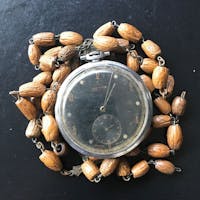Ducks will waddle,
chickens will dance,
turkeys will gobble,
doves will romance.
Crows will caw,
bluebirds will sing.
Get too close
they'll take to wing.
A Comment by Carl

Very nice!
A Comment by MFish

Thank you Carl. I'm trying
Ducks will waddle,
chickens will dance,
turkeys will gobble,
doves will romance.
Crows will caw,
bluebirds will sing.
Get too close
they'll take to wing.
NASA Astronomy Picture of the Day:
Can you find two Earth shadows in today's image? It's a bit tricky. To find the first shadow, observe that the top part of the atmosphere appears pink and the lower part appears blue. This is because the top half is exposed to direct sunlight, while the lower part is not. The purple area in between is known as the Belt of Venus, even though Venus can only appear on the other side of the sky, near the Sun. The blue color of the lower atmosphere is caused by the Earth blocking sunlight, creating Earth shadow number 1. Now, where is the second Earth shadow? Take a look at the Moon. Do you notice something unusual about the lower left part? That area appears unusually dark because it is in the shadow of the Earth, creating Earth shadow number 2. To be precise, the Moon was captured during a lunar eclipse. This carefully timed image was taken in Sampieri, Sicily, Italy, in July 2018.
Photo by Marcella Giulia Pace
Photo by Ricardo Gomez Angel on Unsplash
Happy Birthday,
my mother, dear.
Missing you, so,
wish you were here.
You have been gone,
now seventeen years.
Please help me,
calm my fears.
"Samples collected from a well that serve more than 40 homes in the idyllic Hannah Heights neighborhood showed some of the highest levels of per- and polyfluoroalkyl substances, or PFAS, recorded in Washington" More at The Seattle Times ➜
Residents wander
around the floor,
searching for those,
not with us, anymore.
It was wet,
speed too fast.
Driving like this,
wouldn't last.
Tires were sliding,
across pavement and stone.
He was thankful,
he was driving alone.
Spinning, he was,
the car left the road,
somersaulting over
the ditch. Losing his load.
The light shone,
in her brown eyes.
She squinted, eyes tight.
Her smile was bright.
My father was a Ford man, most of his life.
We lived in Seattle, Dad was working for Todd's
Shipyard, in West Seattle.
We moved to Riverton Heights. He bought a Trailer
Park and went to work, at a Ford Dealership, in Renton.
I remember, when he brought home a 1949, Ford, 4 door
sedan. Stick shift, on the steering column and a V-8.
it was a treat.
We relocated, East of the Cascade Mountains. I remember,
as I had enrolled at O'Dea and was disappointed, as we were
leaving my friends.
Dad opened an Electrical Contracting business and all of his
trucks were Ford. I specifically remember a pickup truck, 1951.
Dad had passed away, several years later, and my younger brother, drove up in a
Chevrolet. I could visualize our dad, spinning in his casket,
when that news broke.
Funny how your mind works, when happenings pop up although,
you hadn't thought about it in years.
NASA Astronomy Picture of the Day:
If not perfect, then this spiral galaxy is at least one of the most photogenic. An island universe containing billions of stars and situated about 40 million light-years away toward the constellation of the Dolphinfish (Dorado), NGC 1566 presents a gorgeous face-on view. Classified as a grand design spiral, NGC 1566 shows two prominent and graceful spiral arms that are traced by bright blue star clusters and dark cosmic dust lanes. Numerous Hubble Space Telescope images of NGC 1566 have been taken to study star formation, supernovas, and the spiral's unusually active center. Some of these images, stored online in the Hubble Legacy Archive, were freely downloaded, combined, and digitally processed by an industrious amateur to create the featured image. NGC 1566's flaring center makes the spiral one of the closest and brightest Seyfert galaxies, likely housing a central supermassive black hole wreaking havoc on surrounding stars and gas. Almost Hyperspace: Random APOD Generator
My emotions are
raw as a sore.
When I see her
I must have more.
She wants to
stay with me,
this I can't do,
were no longer we.

.jpg?fit=crop&w=280&h=280&q=93)



